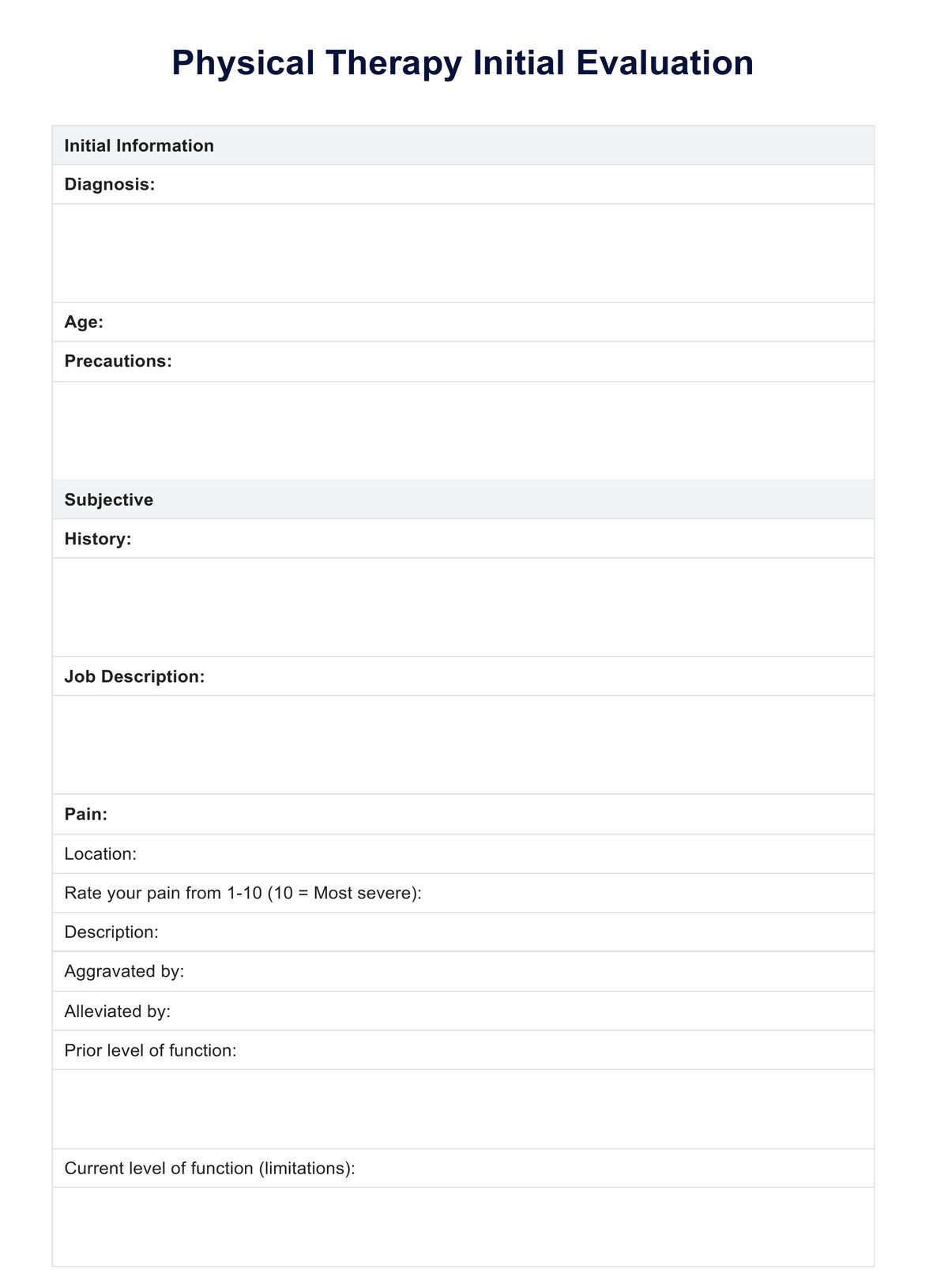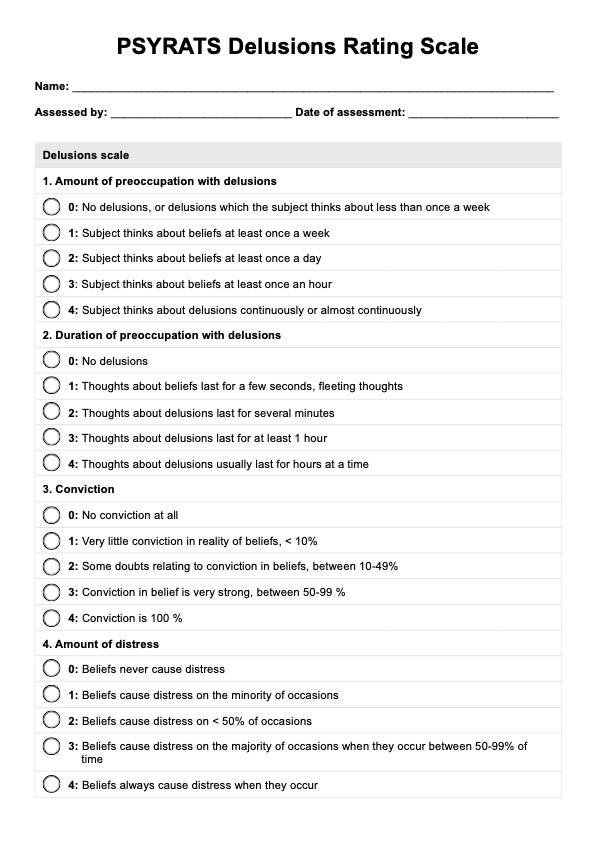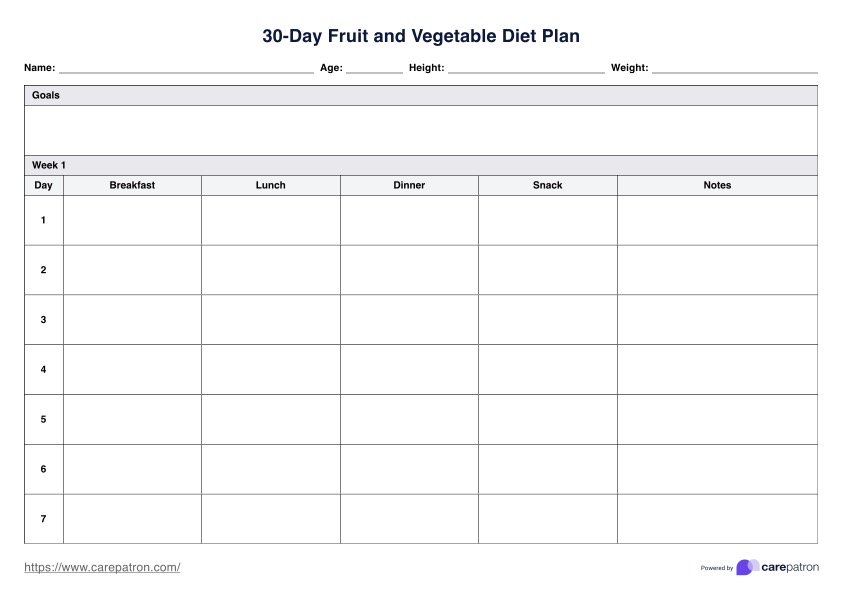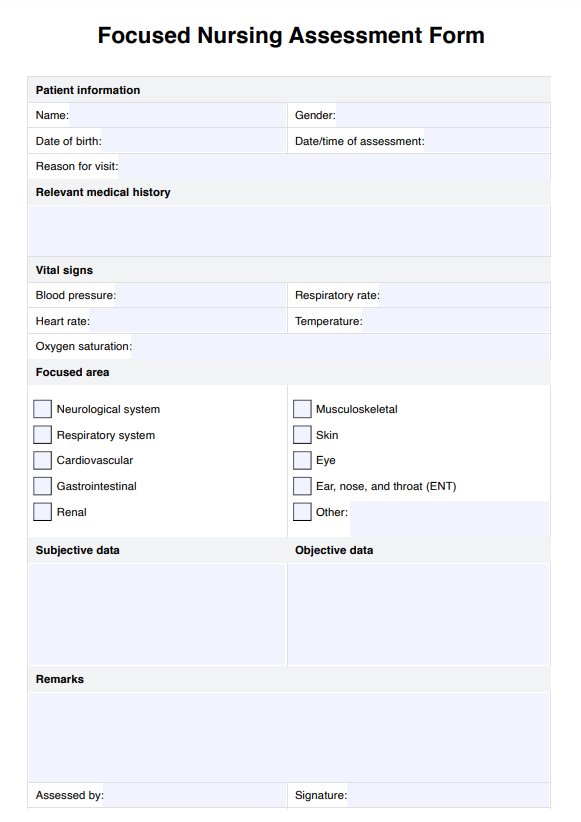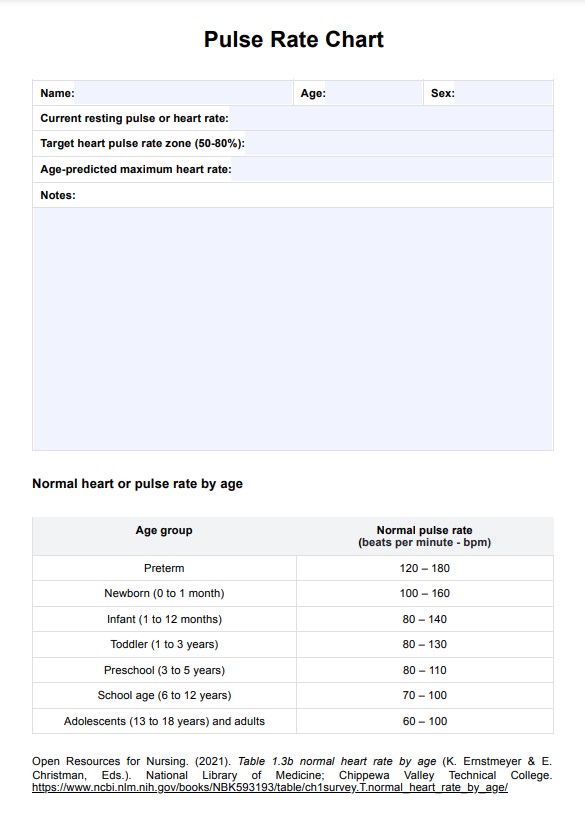Trunk Impairment Scale
Explore the Trunk Impairment Scale with our free guide and example. It is deal for professionals in stroke rehabilitation and therapy assessment.


What is the Trunk Impairment Scale?
The Trunk Impairment Scale (TIS) is a specialized assessment tool used predominantly in the field of stroke rehabilitation. It is designed to evaluate trunk control, a key factor in the functional independence of stroke patients. The scale assesses motor impairment, focusing on the patient's ability to perform movements involving the trunk.
Trunk control is crucial for balance, mobility, and the performance of daily activities. The TIS measures both static and dynamic sitting balance, as well as trunk coordination. This scale is an essential tool in clinical rehabilitation, helping therapists and medical professionals determine the level of trunk impairment and plan appropriate interventions.
The TIS is divided into three main sections: static sitting balance, dynamic sitting balance, and coordination. Each section includes specific tasks that the patient is asked to perform, with the therapist scoring their ability based on observed performance. The scale provides a comprehensive view of trunk functionality, which is critical in stroke rehabilitation.
Trunk Impairment Scale Template
Trunk Impairment Scale Example
How does the Trunk Impairment Scale work?
The Trunk Impairment Scale assesses a patient's trunk control in various positions and movements. The scale is administered in a clinical setting, typically as part of a comprehensive stroke rehabilitation program.
During the assessment, patients are asked to perform tasks involving maintaining or changing trunk position. These tasks are designed to evaluate the patient's static and dynamic balance and coordination. The therapist observes and scores the patient's performance based on specific criteria for each task. The scores from each task are then totaled to provide an overall measure of trunk impairment.
The TIS is particularly useful in assessing patients in both acute and chronic stages of stroke recovery. It helps identify specific areas of impairment and guides the development of targeted rehabilitation strategies. The scale's focus on trunk control offers valuable insights into a patient's overall functional ability and potential for independence.
When to administer the assessment
The Trunk Impairment Scale (TIS) is a critical assessment tool in the field of stroke rehabilitation, designed to evaluate motor impairments affecting trunk control. Its administration is pivotal in various stages and settings of stroke recovery and rehabilitation. Understanding when to administer the TIS is essential for clinicians to assess and address stroke patients' specific needs effectively.
Acute stroke rehabilitation
In the acute phase following a stroke, the TIS plays a vital role in assessing the initial level of trunk control. This early assessment is crucial as it lays the foundation for rehabilitation. During this stage, the patient's ability to control their trunk can significantly impact their overall recovery trajectory. The TIS helps clinicians set realistic and appropriate rehabilitation goals tailored to the patient's abilities. It also aids in determining the intensity and type of interventions required in the initial stages of recovery.
Chronic stroke patients
For patients in the chronic phase of stroke recovery, the TIS is instrumental in monitoring ongoing progress and adapting rehabilitation plans accordingly. Over time, patients may experience changes in their trunk control abilities, either improvements or persistent challenges. Regular administration of the TIS allows therapists to track these changes, providing insights into the effectiveness of the current rehabilitation strategies and guiding necessary adjustments. This ongoing assessment ensures the rehabilitation program aligns with the patient's evolving needs and capabilities.
Inpatient and outpatient rehabilitation settings
The TIS is versatile and applicable in both inpatient and outpatient settings. In inpatient rehabilitation, where patients often receive intensive therapy following a stroke, the TIS offers a standardized and systematic way to assess trunk control. This standardization is crucial for ensuring consistent care and tracking progress over time. The TIS provides a reliable method to assess trunk control during periodic visits in outpatient settings, where patients may be seen less frequently. It ensures continuity in the assessment process, allowing therapists to gauge progress and make informed decisions about ongoing care effectively.
Research studies
In stroke research, the TIS is a valuable tool for evaluating the efficacy of various rehabilitation interventions. Its standardized format and validated scoring system make it an ideal instrument for research purposes. The TIS is used in clinical trials and observational studies to measure the outcomes of different therapeutic approaches, contributing to the evidence base in stroke rehabilitation. By comparing TIS scores across different patient groups and interventions, researchers can conclude the effectiveness of specific rehabilitation techniques and approaches.
Predictive tool in rehabilitation
Beyond its role in assessing current trunk control, the TIS is also valuable as a predictive tool. Early TIS scores can help predict functional outcomes in stroke patients, guiding clinicians in prognostication and goal setting. This predictive ability is particularly important in developing personalized care plans and in communicating realistic expectations to patients and their families.
Guiding rehabilitation interventions
The TIS not only assesses trunk control but also guides the selection of specific rehabilitation interventions. Based on the TIS scores, therapists can choose targeted exercises and therapies to address identified deficits. This tailored approach ensures that each patient receives the most appropriate and effective interventions for their trunk control impairments.
The Trunk Impairment Scale is a multifaceted tool essential in various stroke rehabilitation stages and settings. Its comprehensive approach to assessing trunk control makes it invaluable for clinicians in tailoring rehabilitation programs, monitoring progress, conducting research, and ultimately enhancing stroke patients' recovery and quality of life.
Interpreting the results of the Trunk Impairment Scale
Interpreting the results of the Trunk Impairment Scale (TIS) is a nuanced process that plays a crucial role in tailoring rehabilitation programs for stroke patients. The scale's comprehensive assessment of trunk control provides valuable insights into the patient's current abilities and rehabilitation needs.
In-depth analysis of each section
- Static sitting balance
A deeper analysis of the static sitting balance scores involves understanding the patient's ability to maintain stability and posture in a seated position. Lower scores in this section might indicate underlying issues such as muscle weakness, poor postural control, or sensory deficits. Rehabilitation interventions might include exercises to strengthen core muscles, improve proprioception, and enhance overall postural awareness. - Dynamic sitting balance
The dynamic sitting balance scores indicate the patient's ability to control and coordinate trunk movements while adjusting their position. This ability is crucial for performing functional activities like reaching or transferring. Therapeutic interventions might focus on activities that challenge the patient's dynamic balance, such as reaching beyond the base of support or weight-shifting exercises, to improve functional independence. - Coordination
The coordination scores assess the patient's ability to perform smooth, controlled trunk movements. Difficulties in coordination could impact daily activities, such as dressing or bending. Rehabilitation might include exercises focusing on segmental control of the trunk, coordination drills, and activities integrating trunk movements with limb movements.
Holistic interpretation and goal setting
The holistic interpretation of TIS scores involves considering the patient's overall functional goals and lifestyle. For instance, a patient's occupation or daily activities might require specific trunk control abilities, which should be considered when setting rehabilitation goals.
Goal setting based on TIS scores should be patient-centered, realistic, and measurable. Goals might range from improving the ability to sit unsupported to enhancing the capacity to perform complex tasks that require trunk stability and coordination.
Integrating results into rehabilitation plans
Rehabilitation plans based on TIS results should be multidimensional, addressing physical aspects and considering the patient's psychological and social well-being.
Incorporating functional activities that mimic daily tasks can enhance the relevance and effectiveness of the rehabilitation program. For example, activities that involve trunk control in different contexts, such as sitting at a desk or moving in bed, can be included.
Monitoring progress and adjusting interventions
Regular reassessment with the TIS is essential to monitor the patient's progress. It helps identify improvements, plateauing, or any decline in trunk control abilities.
Adjustments to the rehabilitation plan should be made based on reassessment results. This might involve progressing exercises, introducing new challenges, or refocusing on specific areas of need.
Collaboration and communication
Effective trunk rehabilitation involves collaboration among a multidisciplinary team, including physical therapists, occupational therapists, and possibly neurologists or physiatrists. Clear communication with the patient and their family about the TIS results and the rehabilitation plan is vital. Educating them about the importance of trunk control and involving them in rehabilitation can enhance motivation and adherence to the program.
Research implications
The results of the TIS also have implications for research. They contribute to the growing body of knowledge regarding trunk impairment post-stroke and the effectiveness of various rehabilitation interventions.
Ongoing research based on TIS scores can lead to the development of innovative rehabilitation strategies and contribute to evidence-based practice in stroke rehabilitation.
Research and evidence
The Trunk Impairment Scale is supported by extensive research and clinical evidence. It has been validated in numerous studies and is considered a reliable and valid measure of trunk impairment in stroke patients. Studies involving various patient populations have demonstrated the scale's utility in clinical and research settings.
Research using the TIS has contributed significantly to our understanding of trunk impairment and its impact on functional outcomes in stroke patients. The scale's ability to quantify trunk control has made it a valuable tool for clinical trials and other research studies evaluating the efficacy of rehabilitation interventions.
Studies have also examined the predictive validity of the TIS, finding that initial trunk control as measured by the scale can be an early predictor of functional outcome in stroke patients. This finding underscores the importance of trunk assessment in the early stages of stroke rehabilitation.
References
Collin, C., & Wade, D. T. (1990). Assessing motor impairment after stroke: a pilot reliability study. Journal of Neurology, Neurosurgery & Psychiatry, 53(7), 576-579.
Verheyden, G., Nieuwboer, A., Mertin, J., Preger, R., Kiekens, C., & De Weerdt, W. (2004). The Trunk Impairment Scale: a new tool to measure motor impairment of the trunk after stroke. Clinical Rehabilitation, 18(3), 326-334.
Verheyden, G., Vereeck, L., Truijen, S., Troch, M., Herregodts, I., Lafosse, C., ... & De Weerdt, W. (2006). Trunk performance after stroke and the relationship with balance, gait and functional ability. Clinical Rehabilitation, 20(5), 451-458.
Commonly asked questions
The frequency of TIS administration depends on the clinical setting and the patient's progress. It is commonly used for initial assessments and periodic monitoring during rehabilitation.
While primarily designed for stroke patients, the TIS can be adapted for assessing trunk impairment in other conditions under the guidance of a rehabilitation specialist.
Yes, proper training and rehabilitation assessment experience is required to administer the TIS and interpret its results accurately and effectively.

.jpg)
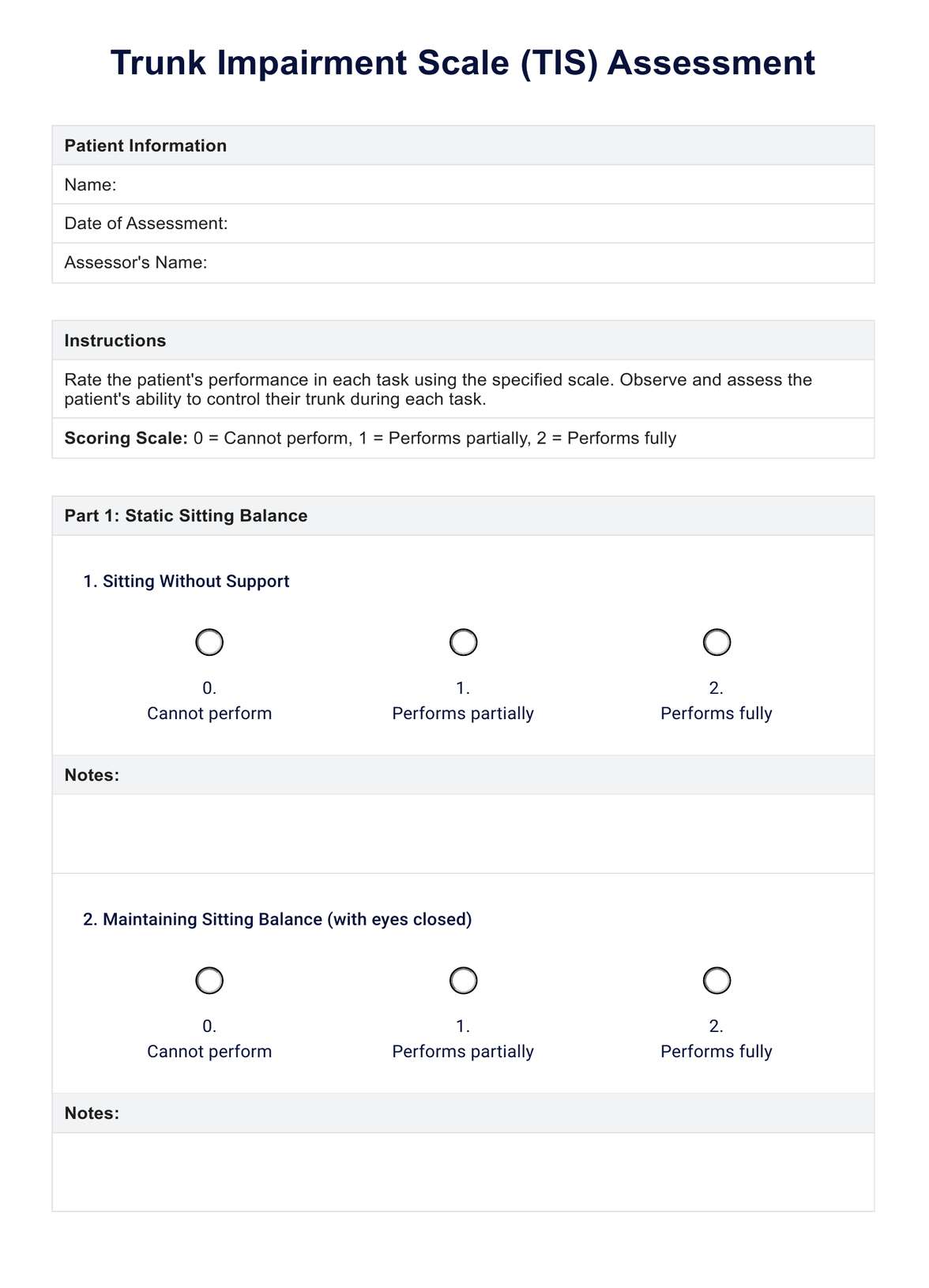
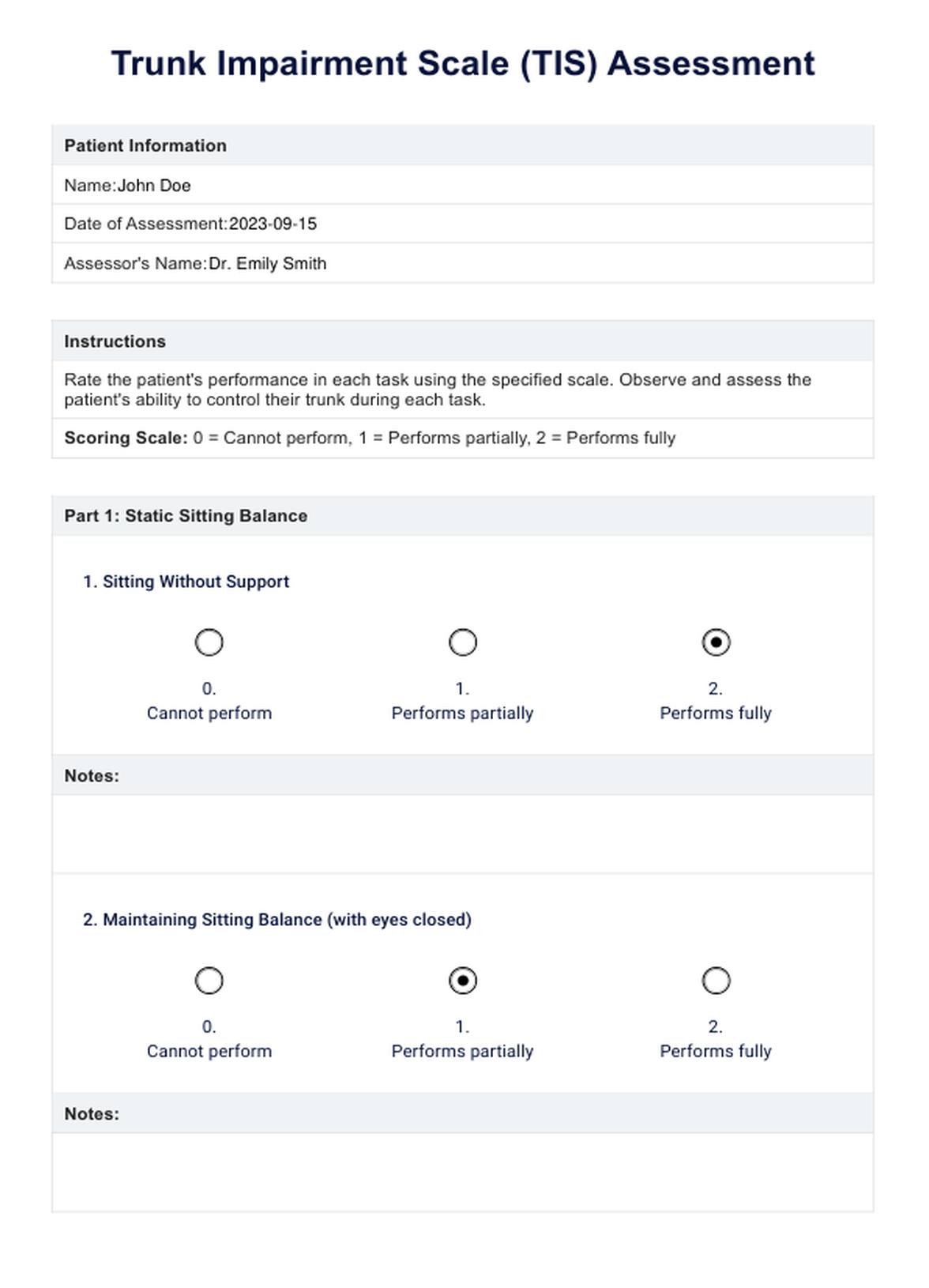

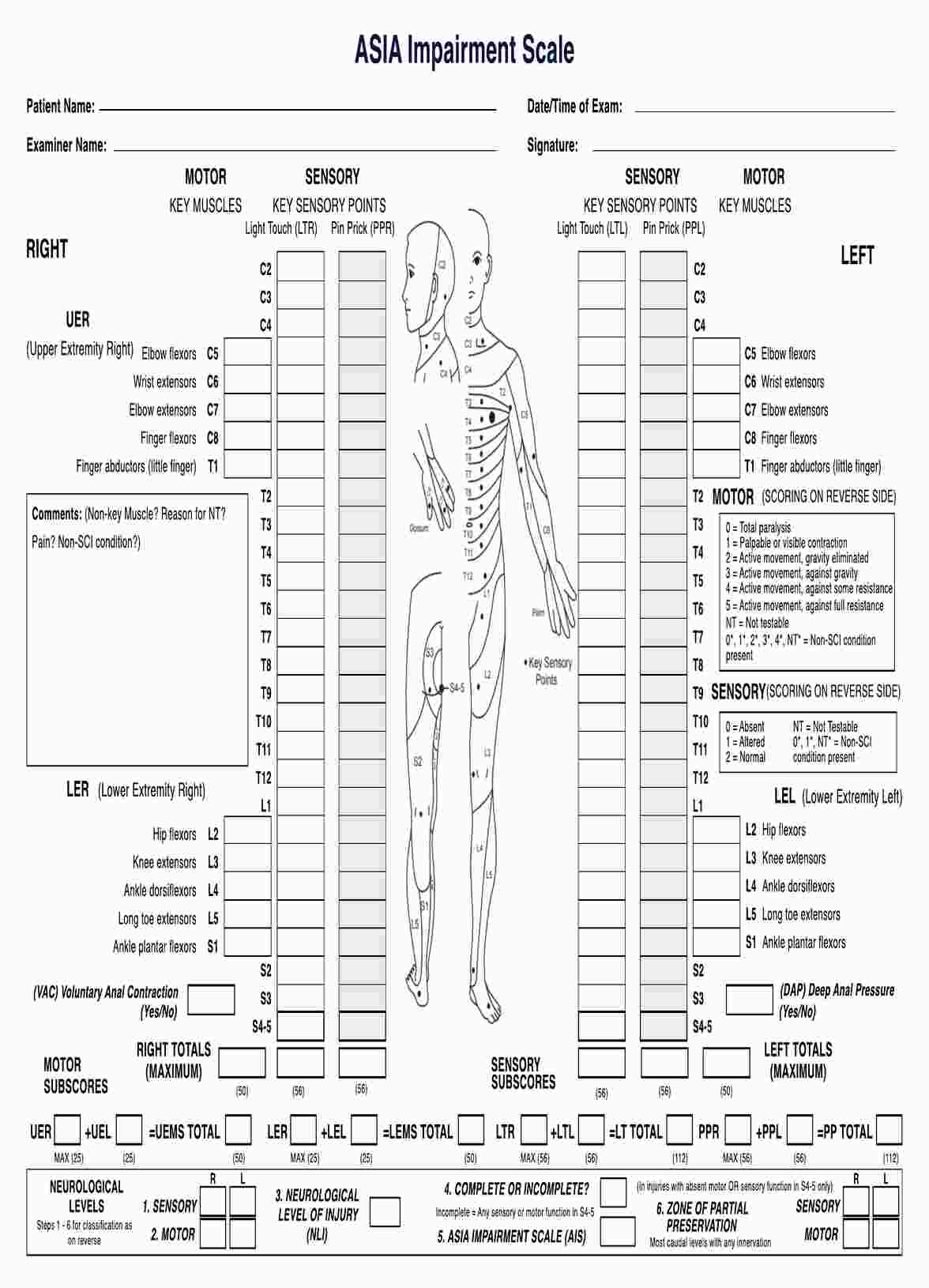

















-template.jpg)
























































































